#European reptiles
Video
Mediterranean Chameleon (Chamaeleo chamaeleon) 1 of 8 by Will Atkins
Via Flickr:
Adult, Algarve, Portugal
#Chameleon#Mediterranean Chameleon#Chamaeleo#Chamaeleo chamaeleon#Wildlife#Wildlife of Europe#European Wildlife#Animal#Nature#Common Chameleon#reptiles#reptile#reptiles of Europe#European reptiles#lizard#lizards#Lizards of Europe#European lizards#Portugese wildlife#Portugese reptiles#Portugese lizards#Lizards of Portugal#wildlife of Portugal#reptiles of Portugal#Algarve#Algarve wildlife#wildlife of the Algarve#close up wildlife#close up#Macro
1 note
·
View note
Text
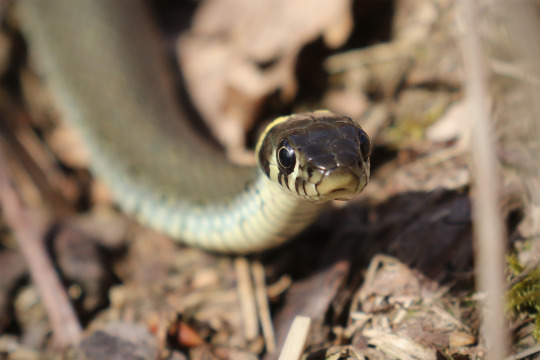

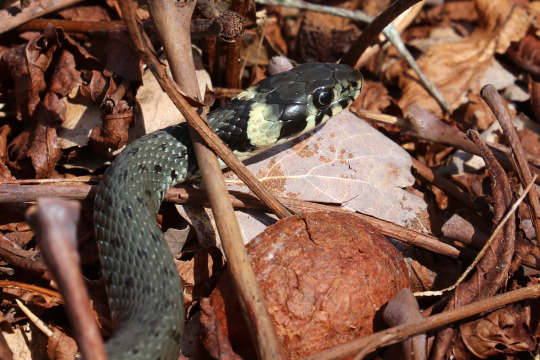

European grass snake/snok. Värmland, Sweden (April 19, 2020).
329 notes
·
View notes
Text
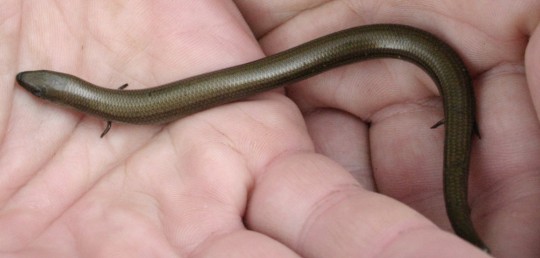
Italian Three-Toed Skink (Chalcides chalcides)
Family: Skink Family (Scincidae)
IUCN Conservation Status: Least Concern
Like several other species of lizard, the Italian Three-Toed Skink has adapted to move through areas covered with dense vegetation by developing an elongated, flexible, snake-like body with highly regressed limbs, although unlike many other "snake-like lizards" members of this species still possess four tiny limbs, each ending in a stumpy three-toed foot. Said limbs are far too small to support the skink's weight and serve no role in movement (which is achieved through an elegant snake-like slithering motion,) which has led many to question what purpose, if any, they serve; it is generally assumed that the limbs are vestigial and that, given sufficient time, the descendants of modern Italian Three-Toed Skinks will lose them entirely, although some herpetologists and evolutionary biologists have suggested that the continued existence of this species' limbs suggests that they must serve some function, such as being moved as part of a courtship display or allowing mating individuals to hold onto one another (although as these behaviours have never been observed these suggestions are entirely speculative.) Found in damp, well-vegetated areas across most of mainland Italy as well as Tunisia, Algeria, Libya and the nearby island of Sardinia, members of this species are diurnal, feed mainly on insects and breed during the spring; like most skinks, females of this species give birth to live young, with newborns, which resemble miniature adults, being independent immediately after birth.
--------------------------------------------------------------------------
Image Source: https://www.inaturalist.org/taxa/53646-Chalcides-chalcides
#Italian Three-Toed Skink#skink#skinks#animal#animals#zoology#biology#herpetology#herpetofauna#wildlife#european wildlife#african wildlife#reptile#reptiles#lizard#lizards#squamata#squamates
889 notes
·
View notes
Text

European leaf-toed gecko (Euleptes europaea) ; Mediterranean house gecko (Hemidactylus turcicus) ; Moorish gecko (Tarentola mauritanica)
Reptiles and Amphibians of the World. Written by Hans Hvass. Illustrated by Wilhelm Eigener. Originally published in 1958.
Internet Archive
#reptiles#lizards#geckos#european leaf-tailed geckos#mediterranean house geckos#moorish geckos#Wilhelm Eigener
176 notes
·
View notes
Text
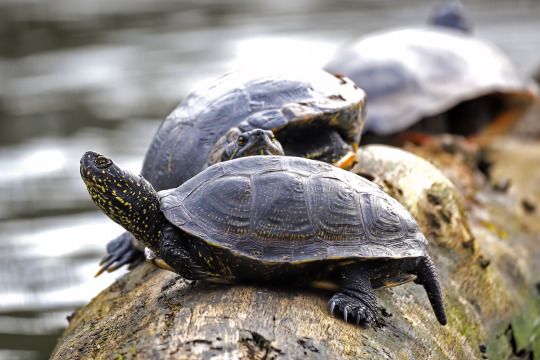
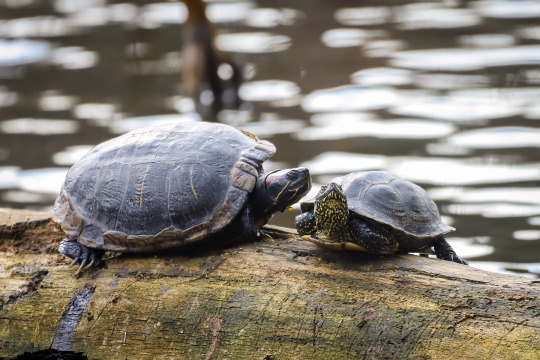
I saw this native turtle for a change, and now you can see it too!
Europäische Sumpfschildkröte (European pond turtle) am Pfaffensee, Stuttgart-West.
#european pond turtle#turtles#reptiles#wildlife#nature#europäische sumpfschildkröte#stuttgart#germany#photographers on tumblr#my photography#wildlife photography#galápago europeo
142 notes
·
View notes
Text
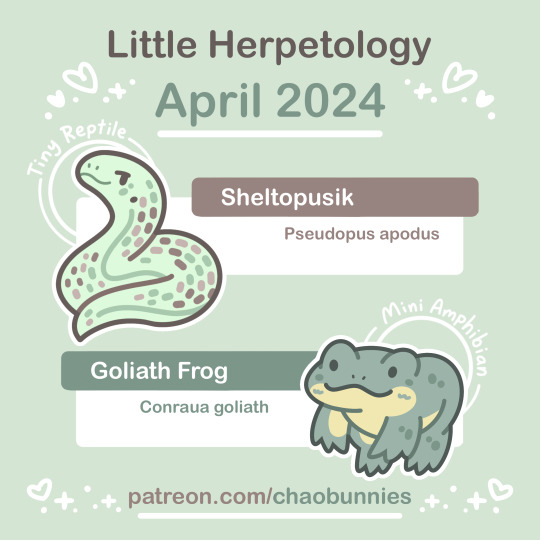
April's Tiny Reptile and Mini Amphibian designs: Sheltopusik and Goliath Frog! 🦎🐸
Fun facts! Even though sheltopusik looks like a snake, it's actually a legless lizard! My Patreon can be found here.
#sheltopusik#european glass lizard#frog#goliath frog#herpetology#reptile#amphibian#froggy#enamel pin#pin club
73 notes
·
View notes
Text
For #AppreciateADragonDay on #TilesOnTuesday:
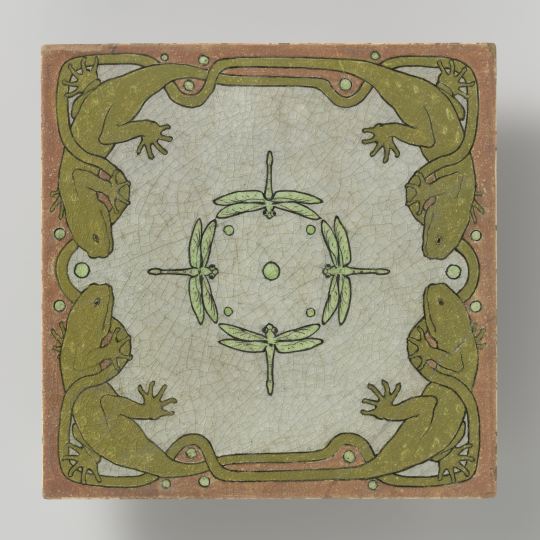
Tile painted with four green lizards [and dragonflies], c. 1900
painter: Truus Nienhuis, Netherlands
mark: ‘Craven Dunnill & Co., Shropshire, England’
earthenware tile, h 15.3 × w 15.3 × d 1.0 cm
Rijksmuseum BK-1978-6
#animals in art#animal holiday#european art#20th century art#19th century art#Dutch art#English art#tilework#tile#ceramics#decorative arts#Art Nouveau#lizard#lizards#dragonfly#dragonflies#insect#insects#reptile#reptiles#Appreciate A Dragon Day#Rijksmuseum#painting#Truus Nienhuis#Tiles on Tuesday
48 notes
·
View notes
Text
Discovered Something!
Apparently, the quills of some hedgehogs will glow under UV light.
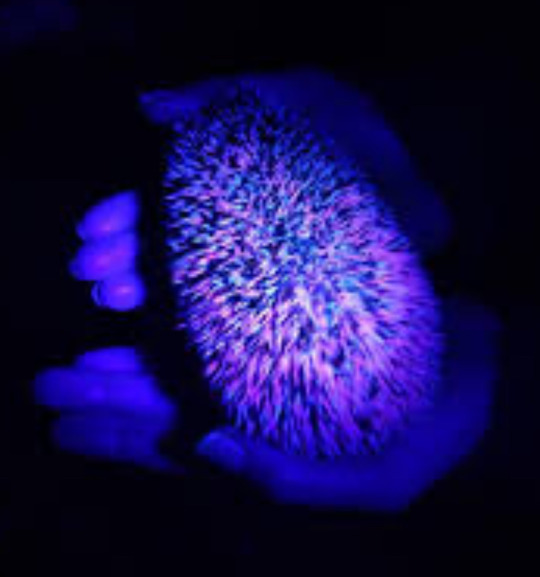

So now all I can imagine is Scout Goseumdochi standing near a UV light and essentially glowing.
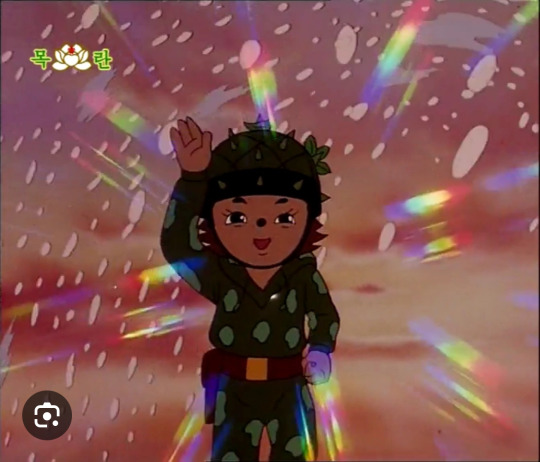
And Geumsaegi thinks it’s the most beautiful thing he’s ever seen and is just standing there like:
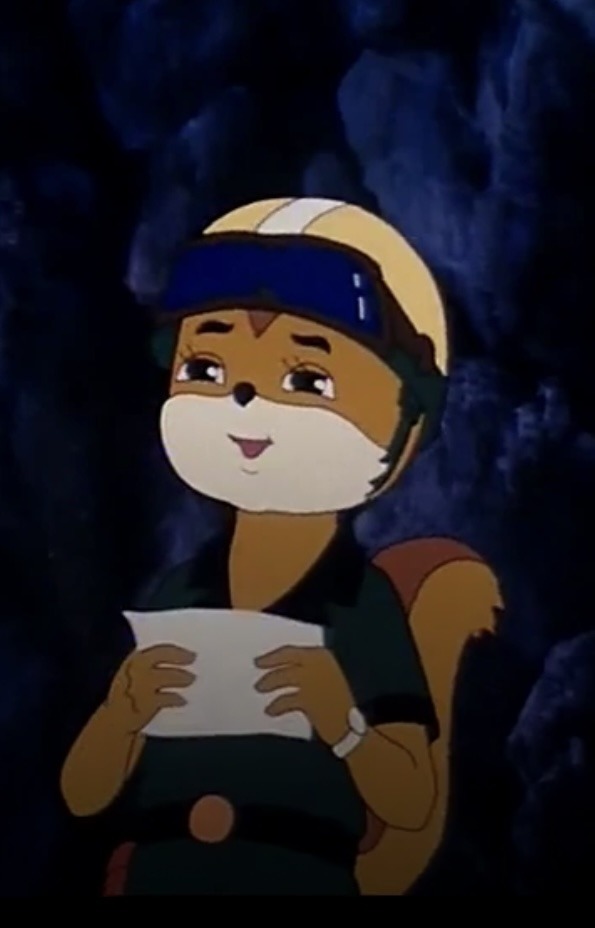
But also imagine if Undochi also glows under UV light and Bamsaegi gets the surprise of his life.
It could be a really cute story idea!
#squirrel and hedgehog#sah#SaH#geumsaegi#scout goseumdochi#bamsaegi#undochi#Or the UV light is used to catch a hedgehog scout#someone lights up like a Christmas tree and the wolves pounce#Either way I have some new ideas#Way too many ideas and projects to even finish one though#photos via magicianmaddini on Reddit in the hedgehog subreddit#and reptiles etc#feels#I think a lot of the studies are on European hedgehogs so I don’t know about the ones from Flower Hill or Korea#but still
11 notes
·
View notes
Text
Animal of the Day!
European Green Lizard (Lacerta viridis)

(Photo in public domain)
Conservation Status- Least Concern
Habitat- Southern Europe; Western Europe
Size (Weight/Length)- 13 cm
Diet- Insects; Fruit; Bird eggs; Mice
Cool Facts- The European green lizard is relatively common throughout Europe, staying mostly in sunny patches of thick vegetation. Males sport a brilliantly blue patch on the underside of their throat to attract females. The bluer the color, the stronger the male. When two males encounter one another, the battle of the century begins. They furiously begin to do push-ups to show off their strength. Flashing their blue throat is sure to turn any opponent away.
Rating- 11/10 (Gym rat but a lizard.)
#Animal of the day#Animals#Lizards#Reptiles#Tuesday#November 1#European green lizard#biology#science#conservation#the more you know
224 notes
·
View notes
Text
2023 Reading Log pt. 4
March was hard for me, both in terms of my personal life and in terms of my reading. I started a whole bunch of books that I haven't finished. Some of them I intend to come back to (two monster books, one for RPGs and one reference book). The ones I intentionally gave up on are listed here, as well as the whys of why I gave up on them.

16. Bestiarium Greenlandica, edited by Maria Bach Kreutzmann. Recommended to me a while ago by @abominationimperatrixx, but I have only been able to get a copy recently. This is the second edition, put out by Eye of Newt Press, which seems to specialize in publishing monster books with previously limited print runs (they also have an edition of Welsh Monsters and Mythical Beasts by C G J Ellis, for example). This book is an A-Z look at mythical creatures from Greenland, which entails a peek at traditional Thule culture. Anggakutt (the equivalent of shamans) use various monstrous spirits to guide them through the spiritual realm and work wonders for them, and these have to be negotiated with or even battled in order to recruit them. So there’s plenty of monsters, many of which are very obscure in English language sources, or confused with other creatures from other Inuit cultures. The book has illustrations for most of the monsters, some line drawings and some full color paintings. All of the art is great, and it doesn’t shy away from the sex and violence in the myths. So a trigger warning is at play if dead and decaying fetus monsters, ghouls with giant penises, or all manner of grotesque facial features are not your thing. But if you’re okay with those, this book is highly recommended.

17. Bog Bodies Uncovered by Miranda Aldhouse-Green. This book looks at the various bodies that have been discovered in peat bogs throughout northern Europe, and is primarily concerned with why these people were killed and placed in the bog. After a discussion of the history of finding bog bodies, and about the nature of bogs and how the tannins contribute to preservation, the book is primarily a forensic investigation. Its ultimate thesis is that most of the bog bodies represent intentional human sacrifices by Celtic and Germanic people. The author does a good job of supporting that claim, although her extrapolations and speculations go a little far for my taste (especially when she conjectures that the Lindow Man was sacrificed because of a specific battle written about by the Romans). The book features a mix of black and white photos and illustrations with color plates, which is always appreciated for a book about physical artifacts.

17a. Bad Gays: A Homosexual History by Huw Lemmey and Ben Miller. I gave up on this one around the halfway point—much longer than I typically go into a book I decide not to finish. That’s because I really wanted to like this one, but couldn’t. The subject is how queer history has often been sanitized and gay historical figures made saintly, when in reality there were plenty of unremarkable and some downright evil gay people as well. The book also wants to aim a giant fuck you at respectability politics, arguing for radical queer liberation and that the current state of gay representation is rooted in capitalism and patriarchy. It also also wants to make snarky quips about gay kings and military leaders—this is a very distant priority. I agree with the book’s politics in the broad sense, and there’s just enough quips and history to have kept me interested this long, but the overall feel of the book is very preachy, and not actually that interested in the lives of the individual subjects. There are ways to make a book both stridently anti-capitalist and an entertaining read, and this one fails.

17b. How Far the Light Reaches by Sabrina Imbler. I stopped this one a few pages into the second chapter. I was looking for a book about marine life and fun facts, and this has that, but is interwoven with personal memoir and is much heavier on the memoir. The first chapter is about how goldfish are stunted in fishbowls, but can grow to enormous sizes in the wild and can act as an invasive species. And this is contrasted with the author feeling stifled by small town life and realizing that they’re queer upon growing up. That was fine, but the second chapter draws connections between how mother octopuses starve themselves watching over eggs, and the generational eating disorders that the author and their mother dealt with. My mood couldn’t handle that. Maybe I’ll come back to this book when I’m in a more secure mental place, but I didn’t feel like crying while reading again. Not for a while—I think my allotment is one sad book a year.

18. Pests: How Humans Create Animal Villains by Bethany Brookshire. This feels like a companion volume to Mary Roach’s Fuzz. Both books are about how humans behave when animals get in their way, but Fuzz deals more with the humans and Pests deals more with the animals. There’s lots of evolution and ecology material here, including very recent research, like the possible link between the evolution of house mice and the contents of their gut flora, and a modern look at how Australia’s ecosystems are reacting to and coping with the introduction of cane toads. This book is much more the balance of science to personal experience that I was looking for right now, and I had a good time with this one.

19. Ancient Sea Reptiles by Darren Naish. I’ve been looking forward to this book since it was first announced, so I’m happy to report that it’s as good as I was hoping. The book discusses Mesozoic marine reptiles (with some guest appearances from Permian taxa, like mesosaurs). First, it goes through the history of their discovery and some overview of their anatomy, physiology and evolutionary relationships. Then, it goes through the clades. Ichthyosaurs, plesiosaurs, mosasaurs, marine crocodiles and sea turtles get their own chapter, and all the other groups, from weird Triassic one-offs to sea snakes, are compiled into a single chapter. Naish is one of my favorite science writers, as he combines a phylogeny-centric approach for an appreciation of the novelties and weirdness of specific genera. I would love it if he wrote a similar book about another group for which books for educated laypeople are thin on the ground, like stem crocodiles or non-mammalian synapsids.

20. Effin’ Birds by Aaron Reynolds. This is the book form of a Twitter feed, which I appreciate from a historical perspective. The feed, and the book, have two main jokes. One, pictures of birds with profanity as captions. Two, faux descriptions of bird behavior and habitats that are jokes about common types of unpleasant people, or people who avoid unpleasant people. I got a few laughs out of it, but I’m glad that I got this book from a library and would not pay money for it. The funniest thing about this book to me is that that selfsame library put it with the books about bird biology and field guides, when there is zero informational content in this book, combined with the book itself making a joke about how you’d never find this book in a library.
#reading log#what are birds#twitter#marine reptiles#paleontology#cladistics#pests#invasive species#biology#marine biology#memoir#gay history#lgtbq history#european history#bog bodies#monster books#greenland#greenland folklore#inuit folklore
37 notes
·
View notes
Video
Viviparous Lizard (Zootoca vivipara) by Will Atkins
Via Flickr:
female
#Viviparous Lizard#Common Lizard#Zootoca vivipara#Zootoca#lacertid#Lacertidae#Wildlife#Wildlife of Europe#European Wildlife#Animal#Nature#animal portrait#reptiles#reptile#reptiles of Europe#European reptiles#lizard#Lizards#Lizards of Europe#British Wildlife#British amphibians and reptiles#British reptiles and amphibians#British reptiles#British lizards#UK wildlife#UK reptiles and amphibians#UK amphibians and reptiles#UK reptiles#UK lizards#Dorset wildlife
1 note
·
View note
Text
Now that we're past the mammals, we can move into the other animal groups, I'm starting with amphibians because there really aren't that many flat out amphibian rahi.
There's only five actually.
Amphibians as a group have three extant subgroups, the one that has frogs and toads, the one with newts and salamanders, and the one with caecilians.
As far as rahi representation is concerned, we only got frogs and toads.
On the frog side, we have the Ghekula and the Sand Frog.
On the toad side, the Makika and the Ranama.
Interestingly enough, all of these frogs and toads actually seem to be quite large in size, as opposed to the small stature we normally associate with the groups.
But I mentioned five amphibian rahi, but so far I've seemingly only gone over 4, what gives?
Well, the fifth one, the Parakrekks, are stated to be amphibians. Problem is that they don't seem to belong to any one group we recognize. So they are amphibian analogue rahi, but so nonspecific that they can't be properly identified beyond that.
#bionicle#rahi taxonomy#ironically the furnace salamander isn't a salamander but is instead a reptile#meaning it's probably more a reference to the salamanders of medieval European folklore than the actual animal
2 notes
·
View notes
Text

Show your support for these grumpy, misunderstood lizards by joining their (informal) club! The rules are simple: No smiling. Eat Snails. Roll like a rotisserie chicken if a human tries to pick you up. And, most importantly, Be Cool (because you're ectothermic, duh).
Shirt available at R.C. Murphy Designs.
#humor#reptile#Sheltopusik#European Legless Lizard#glass lizard#reptile shirts#reptile clothing#reptile jokes
2 notes
·
View notes
Text
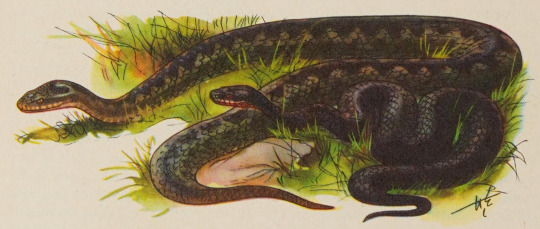
Common European viper and black variation (Vipera berus)
Reptiles and Amphibians of the World. Written by Hans Hvass. Illustrated by Wilhelm Eigener. Originally published in 1958.
Internet Archive
142 notes
·
View notes
Photo

European Green Lizard
Redbubble
2 notes
·
View notes
Text



When you're leaving the pile of slates with tons of wall lizards, only to stop right on your tracks at the sight, in the corner of the eye, of this gorgeous green lizard
2 notes
·
View notes